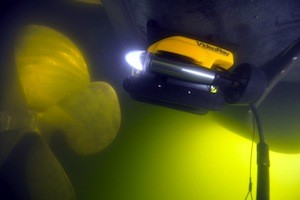Andrew F. Krepinevich -
The world’s vast undersea energy infrastructure—oil and gas platforms, wellheads, pipelines and pumps—is now vulnerable to attack by cheap submarines and unmanned vehicles.
Nearly 60 years ago the classic television documentary series “Victory at Sea” first recounted the U.S. Navy’s exploits during World War II.
Several episodes highlighted the Battle of the Atlantic against German submarines that were waging guerrilla war at sea.
Their objective: destroy allied cargo ships providing an economic lifeline from America to Britain. The German submarines pursued a form of warfare known as commerce raiding, attacking the enemy’s economic assets at sea.
The U.S., British and Canadian navies won the Battle of the Atlantic, thanks to their use of convoys and exploitation of advances in antisubmarine warfare technology and tactics—but only after suffering horrendous losses in blood and treasure.
At war’s end, the United States emerged as far and away the world’s predominant naval power.
Since then the U.S. commitment to providing unfettered access to the world’s seas to all nations has enabled an era of economic globalization and growth.
Memories of a time when access to the seas was not guaranteed have faded. Yet much has changed in the past 60 years.
Two developments in particular suggest a growing need for the United States and other peaceful nations to begin thinking anew about how to defend their maritime commerce, albeit under very different circumstances.

Posted via http://maritime-news.posterous.com Maritime-News posterous
.jpg)
No comments:
Post a Comment